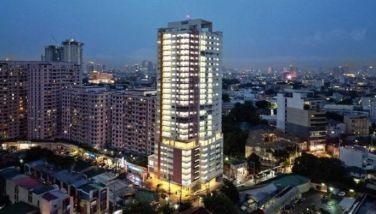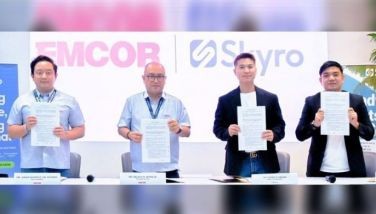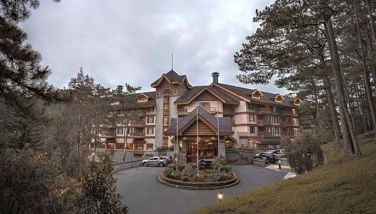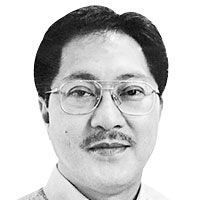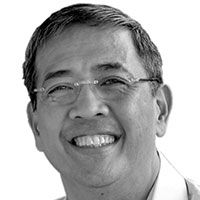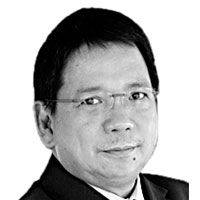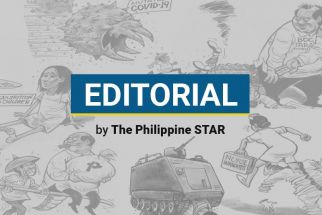Agree to disagree

Men and women of applied sciences are people with expertise who are able to provide more dispassionate views and impersonal manner of looking at problems and issues at hand. But like any other professional, scientists also differ very much in their views while looking at the same picture.
This much we get much from our scientists in the Cabinet of President Ferdinand “Bongbong” Marcos Jr., or (PBBM).
PBBM has two science experts in his Cabinet. They are, namely, Department of Environment and Natural Resources (DENR) Secretary Ma. Antonia Yulo-Loyzaga, and Department of Science and Technology (DOST) Secretary Renato Solidum Jr. Loyzaga got appointed to the DENR in July last year and a month later, Solidum was named to head the DOST.
Known for her expertise in climate and disaster resilience, Loyzaga has experience in leading and working with the National Resilience Council, Manila Observatory, Philippine Disaster Resilience Foundation, to name some from 2007-2016. During this period, she was appointed to the DOST’s Committee on Space Technology Applications and to the UNESCO’s National Commission’s Committee on Science and Technology. She holds a Master of Arts degree in Government from Georgetown University and Political Science degree from the Ateneo de Manila University.
On the other hand, Solidum is a Geology graduate from the University of the Philippines and obtained his masteral degree in Geological Sciences in the University of Illinois and completed his Ph.D. in Earth Sciences in Scripps Institution of Oceanography in the University of California. Prior to his Cabinet post, Solidum concurrently served as the DOST Undersecretary for Disaster Risk Reduction and Climate Change and as officer-in-charge of the Philippine Institute of Volcanology where he has worked since 1984.
Now, let us examine the official views of the DENR and DOST chiefs on the issue of reclamation. Cases in point are the 22 reclamation projects nationwide, including those around the Manila Bay area that were suspended upon orders of PBBM last week. It was informally disclosed last Monday (Aug.7) during a dialogue with national and local government officials in Bulacan on the severe flooding caused by two successive typhoons “Egay” and “Falcon” in Central Luzon.
The President mentioned about the suspension of all reclamation projects, except for one that has already undergone review. Upon clarification with PBBM two days later at Malacañang, the DENR Secretary announced a total of 22 reclamation projects “are all suspended and under review” by the DENR until further notice.
“I have a copy of the suspension (order). As soon as the President speaks, I supposed this took effect when he said this in Bulacan,” Loyzaga retorted as she brandished a piece of paper as proof of the written, official Presidential directives to the DENR.
For this purpose, Loyzaga cited, the DENR will conduct a “cumulative impact assessment” of each and every 22 projects as required by Executive Order No. 74 involving reclamation activities all over the Philippines. Loyzaga vowed to immediately constitute a “scientific team” the DENR will provide with a program of work on the review of all the reclamation projects.
Offhand, Loyzaga could not give a specific timetable on how long the review process. She promised though the DENR will do a “transdisciplinary work” on these reclamation projects. “This is not just inter-disciplinary or multi-discipline but we learn from communities, experts from practice – not just from scientists who are just professors – physical scientists, oceanographers, geologists, as well as climate scientists and social scientists on board,” Loyzaga pointed out.
Loyzaga clarified these projects will undergo review by Presidential decision because “the DENR has no authority to suspend” these reclamation projects.
According to Loyzaga, all the affected reclamation projects have been approved by the Philippine Reclamation Authority (PRA) and their respective local government units during the previous administration. She stopped though identifying if it was PRA during the term of former President Rodrigo Duterte.
In our Kapihan sa Manila Bay breakfast news forum last Wednesday, Solidum was asked on the DOST position on PBBM’s suspension of reclamation projects in relation to climate change impact. “I will give you the scientific analysis and you conclude,” Solidum riposted.
In broad strokes, Solidum explained reclamation or creating new lands in coastal areas are being done all over the world. “In other areas, the ideal reclamation will be an island reclamation. This means do not connect it to another reclamation so that the waters can still pass through. (But) climate change has no effect with reclamation. It’s the other way around,” Solidum pointed out.
As example, Solidum noted, the reclaimed areas facing Manila Bay coastline are more exposed to storm surge and tsunami. “When you reclaim and you append, or you connect the reclaimed land to an existing land, if the drainage was not properly done, and not well engineered, then you can be sure, it will cause flooding to the areas it connected to,” the DOST chief asserted.
The new reclaimed area, he warns, becomes more exposed to sea actions. But on the other side that used to face Manila Bay, lesser threats from storm surge or tsunami, he pointed out.
Loyzaga agreed “there are many ways of doing reclamation correctly” and cited as good examples the entire Luneta (Rizal Park), the Intramuros and the entire Cultural Center of the Philippines (CCP) reclamation grounds in Pasay City. “These are all reclaimed areas. So I would not say categorically, that island reclamation is better because it really depends on the specific physical and social context of the area,” Loyzaga pointed out.
“But Secretary Solidum is of course, the Secretary of the DOST, so we respect his own inputs into this process,” the DENR chief declared.
When people of science agree to disagree, the decision becomes no longer science-based but turns into something else.
- Latest
- Trending













